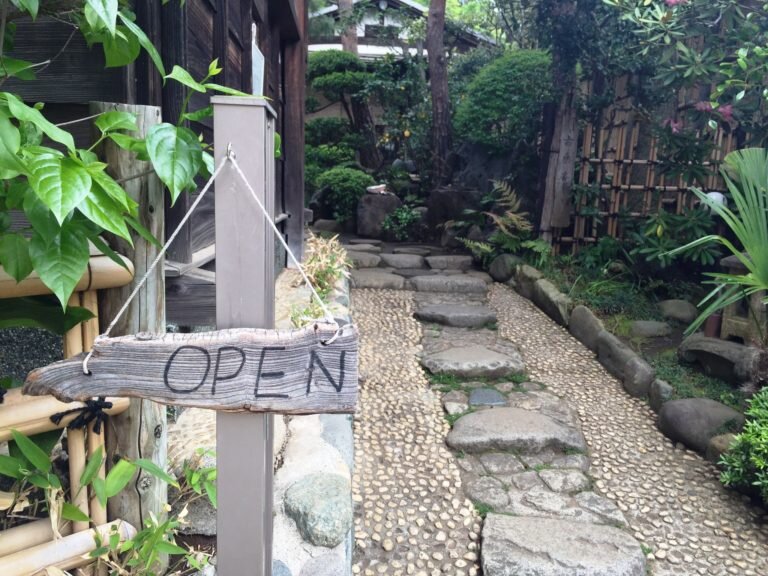Where Do You Go to Find Your Community?
Drop-In Buddhist Cafe
In the heart of Tokyo shopping district, Daikanyama, there is a café run by a Buddhist temple. At first glance, it is just another stylish resting place, but here you can talk to monks. Once inside, the décor is distinctively Buddhist.
The banner is that of temples, there are statues of Amitabha Tathagata, and scripts of the chant. Here, you can drop in and pay an hourly charge to speak to a monk who is usually available. If not, you can reserve.
The waiting staff are happy to help by telling how long the waiting time can be.
Of course, you can just pop in for tea and mainly Japanese style sweets.
The primary users, just like any other café, are aged from the twenties to forties.
The monks tend to hear about relationships, but sometimes they find people who are genuinely interested in training in Buddhism but didn’t know where to start.
It is a much easier entry point to the spiritual world than going into often imposing temples, though there are plenty around the corners all over Japan.
The traditionalists may argue that this is not the way, and then, it has successfully drawn the young generation.
Re-gathering to the Local Community
The temples have always been the focal point of the local community in Japan but last 50 years saw a decline in the practice.
Monks were old, buildings are dark, people found it unhelpful at times, and it was a duty in life that you had to oblige.
They were diminishing in importance and as well in physical presence as the land prices went up.
For many people, it was a thing of the past following the rapid economic growth.
But after this “lost generation”, the younger people in their 20s to 40s find it something of a new experience, something that draws them.
In the middle of the city, under the shadows of high-rise office buildings, another temple opened up space for cross-generation café to serve the local community.
There are Yoga classes, social event for cancer patients, crèche, Buddhism course, Chorus group, Hawaiian Dance, and so on.
Total of 8000 people used their service in one year.
It is not unique to Tokyo and Osaka anymore. There are Meet-up events for different purposes, and often temples organise them, using the available spaces, in many places across Japan.
Miniature Buddhism Statues
This revived interest is reflected in shopping trend as well.
There is a rise of the market for Buddhism goods.
A major wood carving statue store started lightweight mini-buddha replica statues, priced around 80,000 to 90,000 yen (USD 700).
The store saw 30% increase in sales and the customers keep on coming back to add another, and another.
Apparel online store developed a knit-cap imitating Buddha’s head.
It sold out during a major exhibition at the national museum.
There are small notebooks or apps for copying the Buddhist images and scripts.
The sales points for these items are that you can do it in your spare 10 minutes.
The Little therapeutic moment for everyone, every day.
Reality of Survival to Bring You Outside of Box
Of course, the reality is that the temples need to raise money by attracting people to come in for the donation. Selling and renting the land were simple ways, as they are typically in very convenient places, and are large plots. But the group of younger monks are leading the new movement, by using social media. As they look for survival, this small victory came from exactly what they are meant to do – being listeners to people at the centre of the community.
As ever, communication is vital, in this case amongst the providers - the temples and monks - to get ideas, share the experiences, and send messages to the society. They are open.

